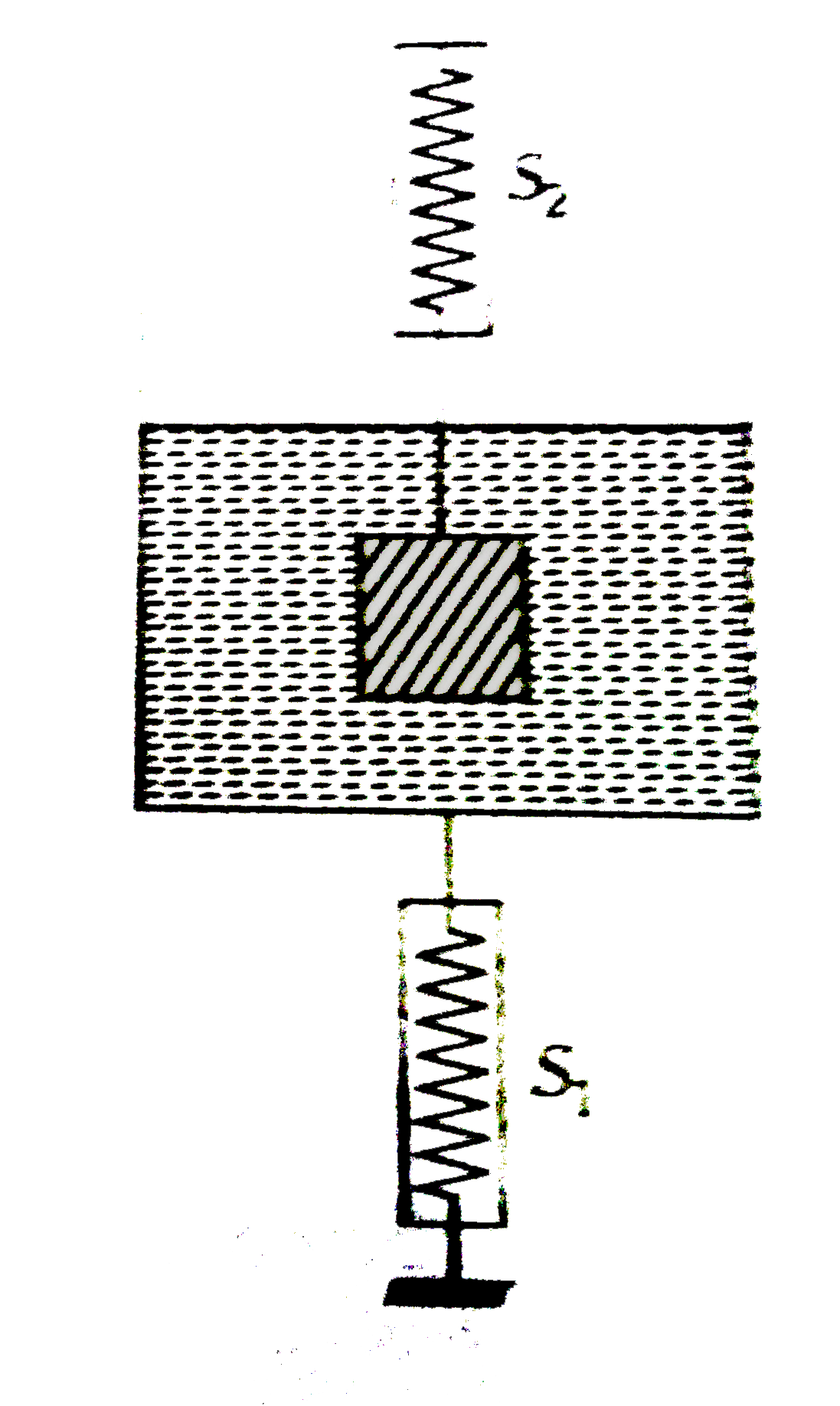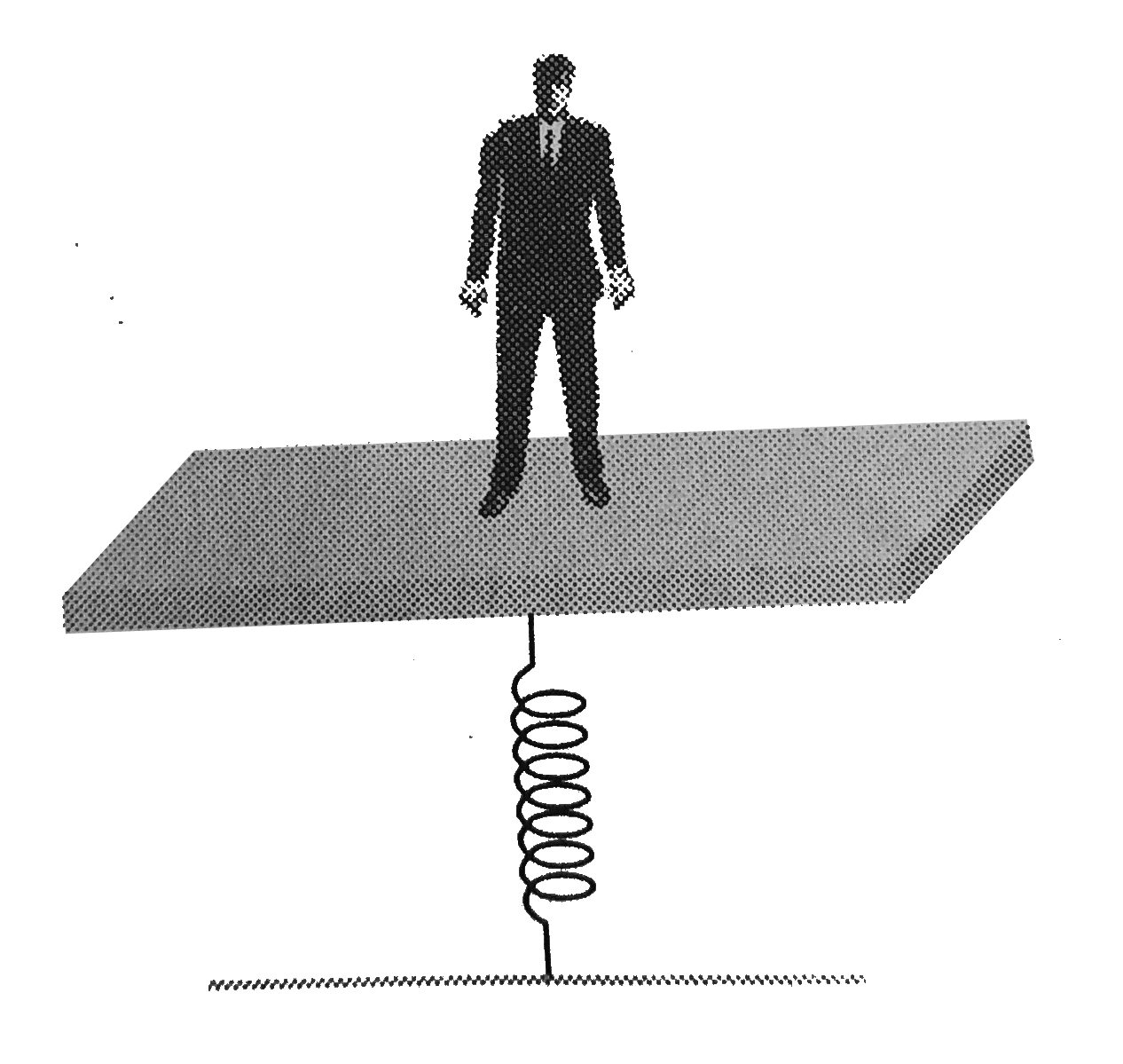A beaker containing water is placed on the platform of a spring balance. The balance reads 1.5kg. A stone of mass 0.5kg and density 104kg/m3 is immersed in water without touching the walls of the beaker. What will be the balance reading now?
2 kg
2.5 kg
1 kg
3 kg
The correct Answer is:B
To solve the problem step by step, we will analyze the situation involving the beaker, the water, and the stone.
Step 1: Understand the initial conditions
The initial reading of the spring balance is given as 1.5 kg. This reading represents the weight of the beaker filled with water.
Step 2: Determine the weight of the stone
The stone has a mass of 0.5 kg. The weight of the stone can be calculated using the formula:
Weight=mass×g
where g (acceleration due to gravity) is approximately 9.81m/s2. However, since we are only concerned with the mass for the balance reading, we can simply use the mass of the stone, which is 0.5 kg.
Step 3: Understand the buoyancy force
When the stone is immersed in water, it experiences a buoyant force equal to the weight of the water displaced by the stone. The buoyant force acts upwards and is equal to the weight of the stone when it is fully submerged.
Step 4: Calculate the new reading on the balance
When the stone is immersed in the water, it does not touch the walls of the beaker, which means it does not exert any additional forces on the walls. The total weight that the spring balance will read now includes:
1. The initial weight of the beaker and water (1.5 kg).
2. The weight of the stone (0.5 kg).
Thus, the new reading on the balance will be:
New reading=Initial reading+Weight of the stone
New reading=1.5kg+0.5kg=2.0kg
Conclusion
The new reading on the spring balance after immersing the stone in water will be 2.0 kg.
---
The initial reading of the spring balance is given as 1.5 kg. This reading represents the weight of the beaker filled with water.
The stone has a mass of 0.5 kg. The weight of the stone can be calculated using the formula:
Weight=mass×g
where g (acceleration due to gravity) is approximately 9.81m/s2. However, since we are only concerned with the mass for the balance reading, we can simply use the mass of the stone, which is 0.5 kg.
When the stone is immersed in water, it experiences a buoyant force equal to the weight of the water displaced by the stone. The buoyant force acts upwards and is equal to the weight of the stone when it is fully submerged.
When the stone is immersed in the water, it does not touch the walls of the beaker, which means it does not exert any additional forces on the walls. The total weight that the spring balance will read now includes:
1. The initial weight of the beaker and water (1.5 kg).
2. The weight of the stone (0.5 kg).
New reading=Initial reading+Weight of the stone
New reading=1.5kg+0.5kg=2.0kg
The new reading on the spring balance after immersing the stone in water will be 2.0 kg.
Topper's Solved these Questions
- PROPERTIES OF MATTERBOOK - DC PANDEY ENGLISHCHAPTER - PROPERTIES OF MATTEREXERCISE - JEE Advanced
57 Videos
- PROPERTIES OF MATTERBOOK - DC PANDEY ENGLISHCHAPTER - PROPERTIES OF MATTEREXERCISE - More than one option is correct
21 Videos
- PROJECTILE MOTIONBOOK - DC PANDEY ENGLISHCHAPTER - PROJECTILE MOTIONEXERCISE - Level - 2 Subjective
10 Videos
- RAY OPTICSBOOK - DC PANDEY ENGLISHCHAPTER - RAY OPTICSEXERCISE - Integer type q.
14 Videos
Similar Questions
A beaker containing water is kept on a spring scale. The mass of water and beaker is 5 kg . A block of mass 2 kg and specific gravity 10 is suspended by means of thread from a spring balance as shown. The readings of scales S1 and S2 are respectively Take, g=10ms−2

View SolutionThe reading of a spring balance when a mass is weighed on it in air is 40 gm. When the mass is immersed in water, its reading is 20 gm. The specific gravity of the mass is
View SolutionA block hangs from a spring balance. The balance reads 40 N in air, 35 N when block is immersed in water and 25 N when block is immersed in another liquid. Find the density of block and other liquid.
View SolutionA beaker containing water is placed on the pan of a balance which shows a reading of M. A lump of sugar of mass m ad volume v is now suspend by a thread (from an independent support) in such a way that it is completely immersed in water without touching the beaker and without any overflow of water. How will the reading change as time passes on?
View SolutionA man weighing 60kg stands on the horizontal platform of a spring balance. The platform starts executing simple harmonic motion of amplitude 0.1m and frequency 2π. its which of the following statement is correct ?

View SolutionA 20N metal block is suspended by a spring balance. A beaker containing some water is placed on a weighing machine which reads 40N. The spring balance is now lowered so that the block gets immersed in the water. The spring balance now reads 16N. The reading of the weighing machine will be.
View SolutionThe mass of 1 litre of water is 1 kg. Find the density of water in kgm−3
View SolutionThe mass of 5 litre of water is 5 kg. Find the density of water in g cm−3
View SolutionA spring balance reads 10kg when a bucket of water is suspened from it . What will be the reading of the balance when an iron piece of mass 7.2kg suspended by a string is immersed with half its volume inside the water in the bucket? Relative density of iron is 7.2 a) 10 kg b) 10.5 kg c) 13.6 kg d) 17.2 kg
View SolutionAn iron block is suspended from a string and is then completely immersed in a container of water. The mass of iron is 1 kg and its density is 7200kg/m3 . What is the tension in the string before and after the iron block is immersed ?
View Solution
